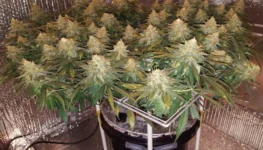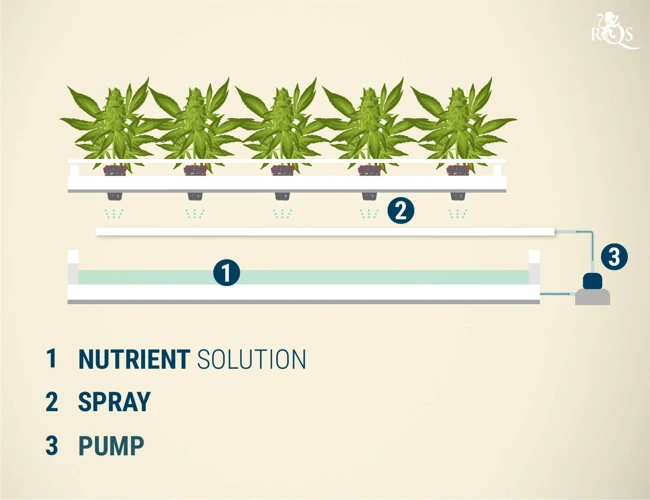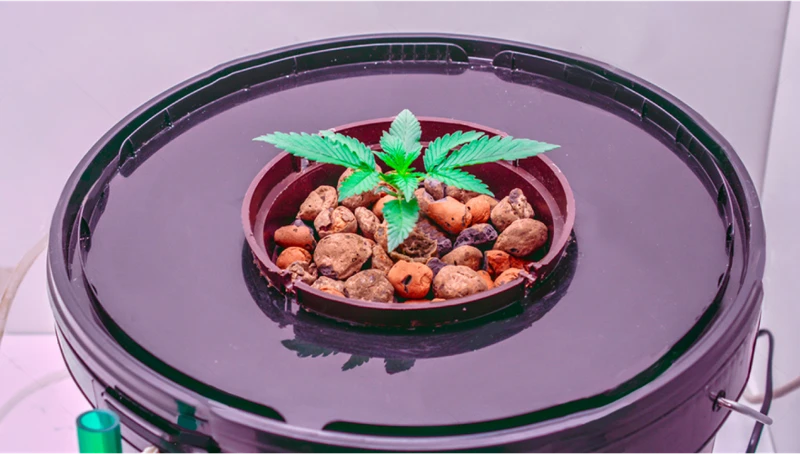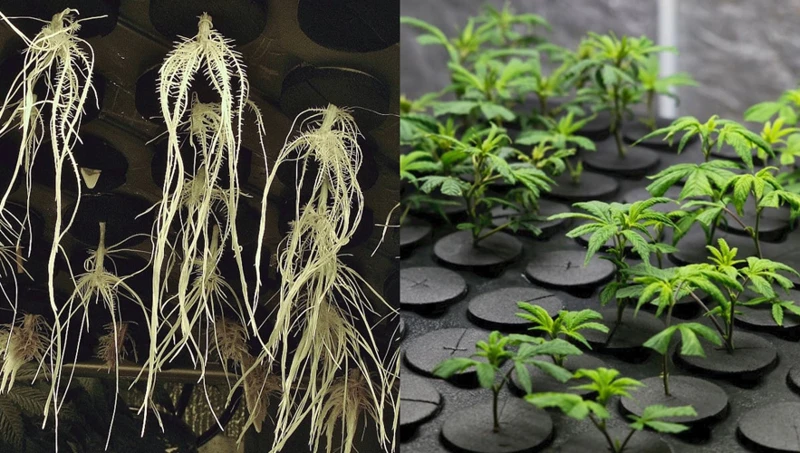
Troubleshooting Aeroponic System Problems in Cannabis Growing
Growing cannabis using aeroponics is a popular method among cultivators due to its high efficiency and fast growth rate. However, like any other hydroponic system, aeroponics can also encounter various problems that can hinder the plant’s growth and yield. Identifying and troubleshooting these problems is crucial for achieving successful cannabis cultivation using the aeroponic method. In this article, we will explore the basics of aeroponics, common problems encountered in the system, their symptoms, and detailed solutions to those problems. Additionally, we will provide tips on preventing aeroponic system problems to ensure successful and healthy growth of cannabis plants.
Understanding Aeroponics
Contents
As a cannabis grower, it’s essential to understand the different cultivation methods available to you. One of the most innovative and effective methods is aeroponics. This system operates by suspending plant roots in the air, with a nutrient solution constantly sprayed onto them. With the right care and maintenance, aeroponic systems can provide impressive yields and potent buds. In this section, we’ll explore what aeroponics is and why it’s so beneficial for cannabis cultivation.
What is Aeroponics?
Aeroponics is a type of hydroponic system that is becoming increasingly popular among cannabis growers. In aeroponics, plants are suspended in the air and their roots are not submerged in any growing medium. Instead, nutrient-rich water is sprayed onto the roots through misting nozzles, ensuring efficient nutrient uptake and oxygenation.
Advantages of Aeroponics:
- Plants grow faster
- Higher yields
- Less water usage
- Reduced risk of pests and disease
- Conserves space
- Reduced energy consumption
Aeroponics is a high-tech solution to cannabis cultivation that requires careful attention to detail. By delivering precise amounts of nutrient solution and oxygen to the root zone, this system encourages rapid and healthy growth. However, like any cultivation method, there are potential problems that can arise which need to be addressed promptly to ensure a healthy crop.
Benefits of Aeroponics for Cannabis
Aeroponics is a highly efficient and effective cultivation technique for cannabis plants. It offers several benefits over traditional soil-based growing methods. Here are some of the advantages of aeroponics for cannabis:
- Increased Yield: With aeroponics, the root zone is exposed to much more oxygen and nutrient-rich mist, resulting in faster growth and higher yields. In fact, studies have shown that aeroponics can increase yields by up to 30% compared to traditional soil-based methods.
- Faster Growth: Aeroponics allows for faster and more vigorous growth because the roots have direct access to oxygen and nutrients. This translates to faster vegetative growth and a shorter overall crop cycle.
- Water Conservation: Since aeroponics uses a misting system to deliver water and nutrients to the plants, it significantly reduces water consumption compared to traditional soil-based growing methods. This makes it an ideal option for areas with limited water resources or regions that experience drought conditions.
- Reduced Pesticide Use: Aeroponics is a closed system, meaning there is no need for pesticides or other chemicals to protect against pests and diseases. This makes it a safer and more natural option for cultivating cannabis.
- Space-Saving: With aeroponics, plants can be grown vertically, taking up less space and maximizing yields per square foot. This makes it an ideal option for growers who have limited space.
- Customizable Nutrient Delivery: Aeroponics allows for precise control over the amount and type of nutrients that the plants receive. This makes it easier to adjust the nutrient solution to the specific needs of each strain and stage of growth.
Aeroponics has many benefits for cannabis cultivation. It offers increased yields, faster growth, water conservation, reduced pesticide use, space-saving, and customizable nutrient delivery. These advantages make it an attractive option for both small and large scale growers looking to maximize their yield and efficiency.
Identifying Problems
One of the biggest challenges of growing cannabis using aeroponics is identifying problems that may arise in the system. As a grower, it is important to be able to recognize symptoms of issues early on to prevent irreparable damage to your plants. In this section, we will explore common aeroponic system problems and their symptoms to help you troubleshoot and maintain a healthy growing environment for your cannabis plants.
Common Aeroponic System Problems
When it comes to aeroponic systems, a number of issues may arise during the cannabis growing process. These issues can halt growth and damage or even kill plants. It is important to identify and address these problems as soon as possible. Here are some common aeroponic system problems to be aware of:
- Poor root growth: When roots are not growing properly or are dying, this can lead to stunted growth, yellowing of leaves, and wilting.
- Clogged sprayers: Over time, the nozzles or sprayers in the system can become clogged with mineral buildup, debris, or algae.
- Poor drainage: Proper drainage is key to maintaining a healthy root system. If the drainage holes in the pots or channels are not functioning properly, plants may become waterlogged and roots may rot.
By familiarizing yourself with these common issues, you can be better prepared to troubleshoot any problems that may arise in your aeroponic system.
Symptoms of Aeroponic System Problems
When it comes to growing cannabis in an aeroponic system, it is important to keep an eye out for any potential problems that may arise. If not addressed promptly, these problems can become detrimental to the health and development of your cannabis plants. Here are some symptoms of aeroponic system problems you should look out for:
| Problem | Symptoms |
|---|---|
| Poor root growth | Yellowing leaves, stunted growth, weak stems, and drooping plants. |
| Clogged sprayers | Dry spots on leaves, reduced growth, and algae growth in the reservoir. |
| Poor drainage | Water accumulation on top of growing medium or stagnant water in the reservoir. |
| Low oxygen levels | Wilting plants, brown roots, and foul odor. |
| Nutrient deficiency or toxicity | Discoloration of leaves, burnt tips, and stunted growth. |
| pH imbalance | Discoloration of leaves, wilting plants, and stunted growth. |
| Pest infestation | Webbing, distortion of leaves, and tiny eggs or insects on leaves. |
It is important to regularly monitor your cannabis plants for these symptoms and promptly address any issues as they arise. This will help ensure healthy and productive growth throughout the entire lifecycle of your cannabis plants.
Troubleshooting Aeroponic System Problems in Cannabis Growing
Once the aeroponic system is set up for cannabis growing, it is essential to ensure that it is functioning efficiently to ensure optimum plant growth and yield. However, even with the best maintenance, problems can arise that can negatively impact plant growth. It is essential to be familiar with common problems that can occur and their symptoms to troubleshoot them with ease. In this section, we will discuss some of the most common problems encountered in aeroponic systems and the steps to troubleshoot them effectively.
Problem: Poor Root Growth
One of the most common aeroponic system problems in cannabis growing is poor root growth. This problem can arise due to a lack of oxygen, improper nutrient solution, or incorrect pH levels.
To effectively troubleshoot this problem, it’s important to first identify the cause. Use the table below to assess potential causes and corresponding solutions:
| Potential Cause | Solution |
|---|---|
| Lack of oxygen in root zone | Ensure optimal oxygen levels by increasing aeration or changing water/nutrient ratio |
| Improper nutrient solution | Check nutrient solution composition and adjust as needed. It’s important to ensure that the nutrient solution contains all necessary nutrients for cannabis growth, and at appropriate levels. |
| Incorrect pH levels | Check pH levels of nutrient solution and adjust as necessary. Cannabis thrives in pH levels ranging from 5.5 to 6.5 |
If poor root growth persists even after implementing these solutions, it may be necessary to check the quality of the seed or clone being used, or to inspect the plant for signs of disease or pest infestation. In some cases, it may also be beneficial to consider changing the grow environment, such as adjusting temperature or humidity levels.
Solution: Adjust Nutrient Solution and pH Levels
When experiencing poor root growth in an aeroponic system, it is important to adjust the nutrient solution and pH levels. Nutrient solution refers to the mixture of nutrients that are dissolved in water and applied to the plants. pH levels refer to the acidity or alkalinity of the solution.
One solution is to check the pH levels of the water and nutrient solution regularly. To do this, use a pH meter or pH test kit to measure the pH levels of the solution. The ideal pH level for cannabis plants grown in aeroponic systems is between 5.5 and 6.5.
If the pH levels are too high, add a pH decreaser such as phosphoric acid to lower it to the recommended range. Conversely, if the pH levels are too low, use a pH increaser such as potassium hydroxide to raise it. It is important to make small adjustments at a time and re-testing the pH levels between them to avoid over-correcting.
Another solution is to adjust the nutrient solution. Nutrients such as nitrogen, phosphorus, and potassium are essential for plant growth, but if the concentration is too high or too low, it can negatively affect plant growth. To find an optimal balance, use a nutrient solution that is specifically formulated for cannabis and follow the manufacturer’s instructions for dilution and application rates.
It is essential to monitor the nutrient solution and pH levels on a regular basis and make adjustments as necessary. Regular maintenance, including cleaning and sterilizing the system, can also contribute to healthy root growth and overall plant health.
| Issue | Solution |
|---|---|
| High pH levels | Add a pH decreaser such as phosphoric acid |
| Low pH levels | Use a pH increaser such as potassium hydroxide |
| Imbalanced nutrient concentration | Use a nutrient solution formulated for cannabis and follow manufacturer’s instructions |
| Regular maintenance | Monitor and adjust nutrient solution and pH levels regularly, and clean and sterilize the system |
Problem: Clogged Sprayers
Clogged sprayers are another common problem in aeroponic systems that can lead to poor plant growth and even death if not addressed promptly. The sprayers in an aeroponic system are responsible for delivering nutrient solutions to the roots of the plants. Over time, these sprayers can become clogged with minerals, debris, or plant matter, leading to reduced nutrient delivery to plants.
Symptoms of Clogged Sprayers:
- Dry or wilted leaves
- Reduced plant growth
- Discoloration of leaves or stems
- Decreased nutrient uptake
- Poor root development
Solution: Clean Sprayers Regularly
Cleaning your sprayers regularly is essential to prevent nutrient solution blockages and ensure that your plants are receiving the necessary nutrients. Here are some steps you can take to clean your sprayers and prevent blockages:
- Turn off the aeroponic system and disconnect the sprayers from the system.
- Rinse the sprayers thoroughly with clean water to remove any loose debris or mineral buildup.
- Soak the sprayers in a solution of water and white vinegar or citric acid for a few hours. These acidic solutions help to break down any mineral buildup or plant matter that is causing the blockage.
- Rinse the sprayers again with clean water to remove the vinegar or citric acid solution.
- Reconnect the sprayers to the system and turn it back on to ensure that the nutrient solution is flowing correctly without any blockages.
- Consider adding a filter to your aeroponic system to catch any debris or particles that could clog your sprayers.
Regular cleaning of your aeroponic system’s sprayers is essential to ensure optimal nutrient delivery and plant growth. By following these simple steps, you can prevent clogging and keep your plants healthy and happy.
Solution: Clean Sprayers Regularly
To solve the problem of clogged sprayers in your aeroponic system, it is essential to clean the sprayers regularly. Neglecting to clean your sprayers can lead to decreased plant growth and possible plant death. Below is a table outlining the steps to take to ensure your sprayers are clean and functioning properly:
| Step | Action |
|---|---|
| Step 1 | Turn off the pump to the system to stop water flow |
| Step 2 | Detach the spray nozzles from the sprayers |
| Step 3 | Soak the nozzles and sprayers in a solution of white vinegar and water for 30 minutes |
| Step 4 | Remove any mineral buildup or debris from the nozzles and sprayers using a small brush |
| Step 5 | Rinse the nozzles and sprayers thoroughly with clean water |
| Step 6 | Reattach the nozzles and sprayers to the system |
| Step 7 | Turn on the pump and inspect the sprayers for proper flow and performance |
By following these steps and cleaning your sprayers regularly, you can prevent potential problems with clogs and ensure a healthy, productive cannabis crop in your aeroponic system.
Problem: Poor Drainage
One of the most common problems that can occur in an aeroponic system is poor drainage. This can happen when water and nutrient solution does not drain properly from the system, leading to waterlogged roots and potentially damaging the plant.
Symptoms of Poor Drainage:
- Stunted growth of plants
- Yellowing of leaves
- Root rot or other fungal infections
- Algae growth in the system
Possible Causes of Poor Drainage:
- Blocked or clogged drainage pipes
- Inadequate slope or pitch in the drainage system
- Insufficient drainage capacity for the size of the system
- Inadequate or damaged drainage fittings
- Failure to properly maintain the system
Solution:
To remedy poor drainage in an aeroponic system, the following steps should be taken:
- Check the Drainage System: Inspect the system for any blockages or damage in the drainage pipes, fittings or sloping. Make sure the system is properly designed for the size of the grow space.
- Adjust the Height of the System: If the system is too low, the nutrient solution may not drain properly. Raising the system may help improve drainage.
- Improve the Sloping: If the drainage pipes lack proper slope or pitch, water may not drain effectively. Adjust the angle of the pipes to encourage better drainage.
- Upgrade Drainage Fittings: If the system’s drainage fittings are damaged, they may require replacement. Make sure to upgrade to fittings that are the appropriate size for the system.
- Regular Maintenance: Properly maintaining the system by regularly checking and cleaning the drainage system can help prevent poor drainage from occurring.
By identifying and addressing issues with poor drainage, an aeroponic system can function effectively and support healthy cannabis growth.
Solution: Check Drainage System
When tackling poor drainage in your aeroponic system, there are a few steps you can take to troubleshoot the issue. Follow these simple steps to remedy the problem:
- Step 1: Check for clogs – a clogged drainage system is often the culprit for poor drainage. Inspect the drainage tubing for any visible debris or buildup. If necessary, use a wire or cleaning tool to clear any blockages.
- Step 2: Proper slope – ensure your drainage tubing is sloped correctly to allow for proper water flow. If the slope is too low, it can cause water to become trapped in the tubing, leading to poor drainage.
- Step 3: Adjust drainage timing – if your drainage system is draining too quickly or too slowly, adjust the timer settings accordingly. A clogged system may also cause water to drain slowly, so make sure to check for any blockages before adjusting the timing settings.
- Step 4: Test pH levels – just like with poor root growth, improper pH levels can also impact drainage. Make sure to test your nutrient solution for pH levels and adjust accordingly.
- Step 5: Inspect sprayers – if your sprayers are clogged or not functioning properly, they can cause an excess of water to accumulate in the system, leading to poor drainage.
By taking the time to thoroughly inspect and troubleshoot your aeroponic system’s drainage, you can help ensure that your plants are getting the proper nutrition and aeration they need to thrive. Remember to regularly check your system for any potential issues and perform routine maintenance to prevent problems from arising.
Preventing Aeroponic System Problems
As with any growing system, prevention is key to avoiding problems with your aeroponic setup. By taking the necessary steps to maintain your system and create a suitable grow environment, you can decrease the likelihood of encountering issues that can harm your cannabis plants. In this section, we will discuss some measures you can take to prevent aeroponic system problems and ensure healthy and thriving plants. From regular maintenance to controlling your grow environment, taking these preventative steps can make all the difference in the success of your cannabis cultivation.
Regular Maintenance
Proper and regular maintenance of an aeroponic system is crucial for its efficient and effective performance, as well as for the growth and health of your cannabis plants. The following table outlines some of the key elements of regular maintenance for an aeroponic system.
| Task | Frequency | Description |
|---|---|---|
| Inspect water level | Twice daily | Check that the water level is appropriate for your system and adjust as needed. |
| Check nutrient solution | Daily | Test the nutrient solution using a pH meter and EC meter, and adjust as necessary. |
| Clean sprayers | Once a week | Remove and clean sprayers to prevent clogging and ensure proper misting. |
| Check for leaks | Weekly | Inspect the system for any leaks, which can cause water and nutrient solution to be lost or not reach plants properly. |
| Clean system | Monthly | Drain and clean the entire system, including the reservoir, pipes, and sprayers, to remove any buildup of minerals, algae, or bacteria that can clog the system and affect plant growth. |
By implementing a regular maintenance routine, you can identify and address any issues or potential problems before they become major concerns. This practice will help to ensure that your aeroponic system runs smoothly and your cannabis plants thrive.
Grow Environment
Creating the right grow environment is critical for preventing aeroponic system problems in cannabis growing. Here are some tips to optimize your grow environment:
- Temperature: The ideal temperature for cannabis in an aeroponic system is between 70-80°F (21-27°C). Any temperature above or below this range can slow growth or cause stress to the plants.
- Humidity: Cannabis plants require humidity levels between 40-60% during vegetative growth, and 40-50% during flowering. Too much humidity can cause mold or mildew, while too little can cause the plants to dry out.
- Light: Cannabis plants need plenty of light for optimal growth. LED lights are the most popular choice for indoor growing, as they are energy-efficient and provide the right spectrum of light for cannabis plants.
- Air Circulation: Good air circulation helps prevent the spread of airborne diseases and pests. Make sure your grow room has good ventilation and a system for exchanging stale air for fresh air.
- Cleanliness: Keeping your grow room clean and organized is critical for preventing problems in an aeroponic system. Make sure to regularly sanitize your equipment, and remove any dead or dying plant matter.
- Training: Properly training your plants to grow in an aeroponic system can help prevent problems later on. Techniques such as topping, pruning, and trellising can help increase yield and prevent overcrowding.
By following these tips and maintaining a healthy grow environment, you can help prevent aeroponic system problems in your cannabis grow.
Conclusion
In conclusion, troubleshooting aeroponic system problems in cannabis growing requires a good understanding of aeroponics and its benefits. Identifying common problems and their symptoms is the first step towards solving the issues. Poor root growth is a problem that can be solved by adjusting nutrient solution and pH levels. Clogged sprayers can be cleaned regularly to prevent any blockages, while checking the drainage system can improve poor drainage problems.
Preventing aeroponic system problems is also important, and regular maintenance is key to avoiding any potential issues. It is vital to monitor the grow environment to ensure it is optimal for the plants. By following these steps, growers can maintain a healthy aeroponic system and ensure that their cannabis plants thrive.
Aeroponics is an innovative and effective way to grow cannabis, offering benefits such as faster growth rates and higher yields. By troubleshooting problems that may arise in the system, growers can optimize their yields and overall crop health. It is important to remember that prevention is also key, and regular maintenance and monitoring can prevent potential problems from occurring.
In conclusion, with proper knowledge and care, the potential of aeroponic systems in cannabis growing can be fully realized. By addressing any issues early on, growers can achieve the best possible outcomes and enjoy the many benefits of aeroponic cultivation.
Frequently Asked Questions
What is the ideal pH level for an aeroponic system?
The ideal pH range for an aeroponic system is between 5.5 and 6.0.
How often should I clean my sprayers?
You should clean your sprayers every 1-2 weeks to prevent clogging and ensure proper nutrient delivery.
Can I reuse nutrient solution in an aeroponic system?
Yes, you can reuse nutrient solution in an aeroponic system, but it should be changed every 2-3 weeks to maintain optimal nutrient levels and prevent the buildup of harmful pathogens.
What is the best temperature range for an aeroponic system?
The best temperature range for an aeroponic system is between 18-25°C (65-77°F). Anything outside of this range can negatively impact plant growth and increase the risk of disease.
How often should I check my nutrient levels?
You should check your nutrient levels at least once a week to ensure they are within the appropriate range for your plants.
What is the optimal humidity for an aeroponic system?
The optimal humidity range for an aeroponic system is between 50-70%. Humidity levels outside of this range can increase the risk of disease and negatively impact plant growth.
What causes poor drainage in an aeroponic system?
Poor drainage in an aeroponic system can be caused by clogged drain pipes or improperly slope trays.
What is the most common cause of poor root growth in an aeroponic system?
The most common cause of poor root growth in an aeroponic system is nutrient imbalance or incorrect pH levels.
How can I prevent algae growth in my aeroponic system?
You can prevent algae growth in your aeroponic system by maintaining appropriate nutrient levels, checking pH levels regularly, and avoiding exposure to direct sunlight.
What is the best way to maintain aeroponic system health?
The best way to maintain aeroponic system health is through regular maintenance, proper nutrient and pH management, and creating a suitable grow environment with appropriate temperature, humidity, and lighting.





